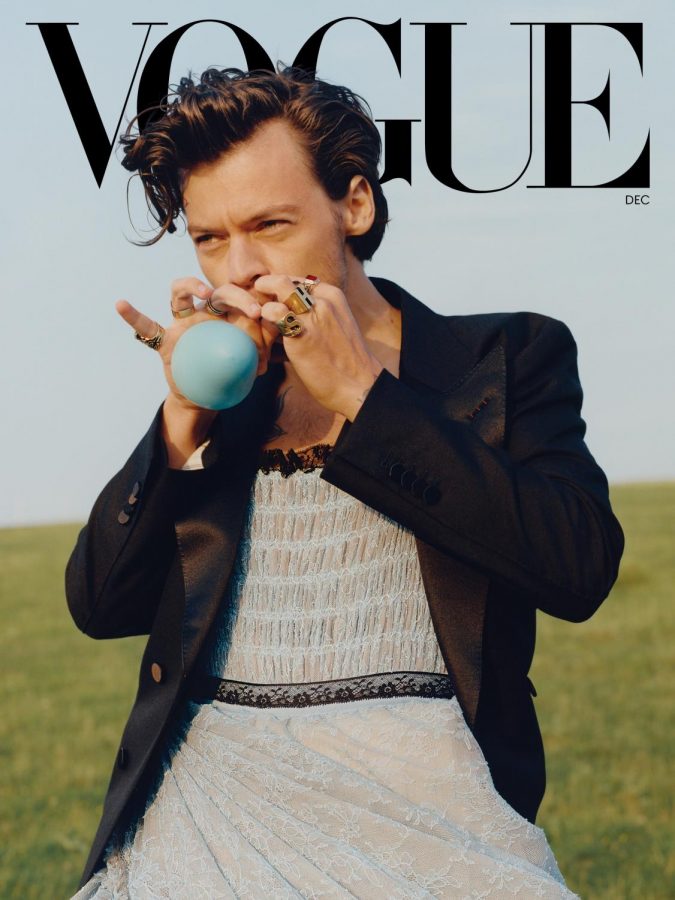Fluidity, Fashion, and Race
November 15, 2021
You know when your friend posts a meme on their private story that you sent them first and you’re like “Girl huh? Stop acting like you just found that.” Well, I’m noticing a similar theme in America, particularly at the intersection of gender fluidity, fashion and race.
Enter Harry Styles, featured on the November 2020 installment of “Vogue Magazine.” On the cover, Styles wears a dark Gucci jacket and lace-textured, mint green dress. He made history as the first man featured alone on the cover. Even as someone who on a good day can recall two songs of his total discography (because that’s what always plays in Fred Meyer), I can still recognize the sheer vastness of his fanbase and his general tendencies that I classify as “the Twitter bots haven’t found anything yet.” But many have voiced their qualms with “Vogue’s” choice to make Harry the first sole cis man placed on the cover.
Billy Porter weighed in, “This is politics for me. This is my life. I had to fight my entire life to get to the place where I could wear a dress to the Oscars… All he has to do is be white and straight.” He makes a valuable point. Of course, Porter isn’t the first person to embrace androgynous fashion, but neither is Harry. Additionally, there’s something to be said for giving the O.G’s the praise they deserve on such a major publication. So many people came before Harry including many queer people of color. The use of Harry as the first man on the cover makes him seem like the first to embrace androgyny – which is simply untrue. I feel like his fashion choices should be embraced by the industry, but I think part of that story is recognition of all the people whose hard work made his transition into the industry so effortless.


